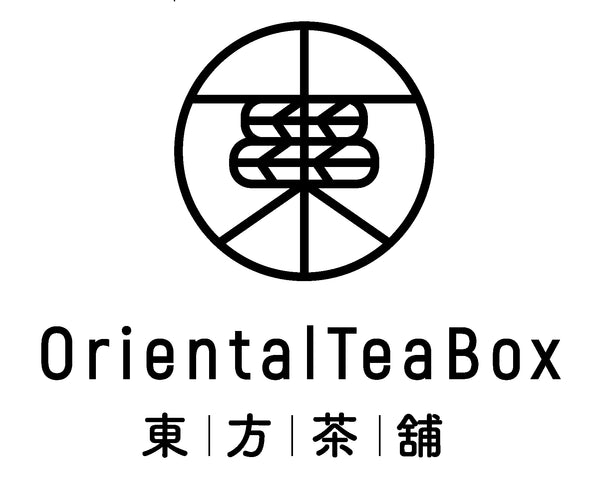What is Pu-erh Tea

Pu-erh tea is a unique, fermented tea from Yunnan, China, that stands apart for its rich, earthy flavour and potential health benefits. Named after the town of Pu-erh in Yunnan Province, this tea has a long history, with its origins dating back over 2,000 years. Traditionally consumed for its robust flavour and wellness benefits, Pu-erh tea continues to gain popularity worldwide.
In this article, we’ll delve into the history, flavours, and brewing methods of Pu-erh tea, as well as highlight some of its scientifically-backed health benefits.

History and Types of Pu-erh Tea
Pu-erh tea is steeped in centuries of tradition. It belongs to a category of tea known as "fermented tea," which involves a unique microbial fermentation process after the leaves have been dried and rolled. This fermentation is what gives Pu-erh its distinctive, earthy taste.
There are two main types of Pu-erh tea:
1. Raw (Sheng) Pu-erh – This tea is left to age naturally, often for many years, allowing the flavours to develop and change over time.
2. Ripe (Shou) Pu-erh – This tea undergoes an accelerated
fermentation process, giving it a richer, more immediate flavour.
Both types have their own unique characteristics, with raw Pu-erh offering a more vibrant, grassy taste when young and mellowing with age, while ripe Pu-erh provides a deeper, smoother flavour right from the start.
The Flavour of Pu-erh Tea
Pu-erh tea is known for its earthy, rich flavour, often described as having notes of damp soil, wood, and even leather, alongside subtle sweetness. It’s a tea that evokes nature, with each sip offering a grounding experience.
When brewed correctly, Pu-erh tea has a smooth, velvety texture with a rich, robust body. Unlike green or black teas, Pu-erh lacks astringency, making it an excellent choice for those who prefer a more mellow cup.

Health Benefits of Pu-erh Tea
Pu-erh tea isn’t just revered for its taste; it also has a host of potential health benefits, many of which have been backed by modern science.

1. Aids Digestion
Traditionally, Pu-erh tea has been used in Traditional Chinese Medicine to support digestion. According to a study published in the journal Food Science and Nutrition, the fermentation process of Pu-erh tea promotes the growth of intestinal probiotics and inhibit pathogenic bacteria, which can improve digestive health.

2. SupportsWeight Loss
One of Pu-erh tea’s most popular claims is its ability to help with weight management. Studies suggest that Pu-erh tea may aid in fat metabolism and assist in weight loss efforts. A study published in the journal Phytotherapy Research found that Pu-erh tea can help reduce visceral fat accumulation.

3. Lowers Cholesterol
Pu-erh tea has been shown to positively impact cholesterol levels, specifically by reducing LDL (bad cholesterol) and increasing HDL (good cholesterol). A study conducted by researchers in China found that regular consumption of Pu-erh tea significantly reduced cholesterol levels in the participants, suggesting a heart-health benefit. You can read more about Pu-erh tea’s effects on cholesterol in a study published in the Journal of Food Science.

4. Boosts Heart Health
By helping to manage cholesterol, Pu-erh tea can also contribute to better cardiovascular health. Studies have found that the tea's antioxidant content may reduce the risk of heart disease. These antioxidants help to neutralise free radicals, which can damage cells and lead to heart disease and other chronic illnesses.

5. Improves Mental Clarity
Pu-erh tea contains moderate levels of caffeine, providing a gentle energy boost without the jitteriness associated with coffee. In addition, it contains the amino acid L-theanine, which helps to promote mental clarity and focus. A study published in the journal Nutrition Reviews found that the combination of caffeine and L-theanine in tea can enhance cognitive performance and improve mood.

How to Brew the Perfect Cup of Pu-erh Tea
Brewing Pu-erh tea is a simple yet rewarding process. If using loose-leaf Pu-erh, follow these steps:
1. Rinse the leaves:
Pour boiling water over the leaves and immediately discard the water. This step ‘wakes up’ the tea and cleanses it of any dust.
2. Steep the tea:
Add hot water again and let the tea steep for 3-5 minutes. The first infusion tends to be strong and earthy, but as you steep the leaves multiple times, the flavour will soften and evolve.
3. Multiple infusions:
Pu-erh tea can be brewed several times, each infusion unlocking new layers of flavour.
Conclusion: An Experience Worth Sipping
Pu-erh tea is a truly unique tea that offers not only rich and bold flavours but also a range of health benefits backed by scientific research. Whether you’re seeking tea to support digestion, manage weight, or simply enjoy a robust cup of earthy tea, Pu-erh has something to offer.
So why not indulge in a cup of Pu-erh today? Each sip offers not just taste, but a connection to centuries of tea culture and wellness practices. Your journey through the world of Pu-erh tea is just beginning, and with every infusion, a new story unfolds.

Sources:
- Bryan, Janet. "Psychological effects of dietary components of tea: caffeine and L-theanine." Nutrition reviews 66.2 (2008): 82-90.
- Cao, Zhen‐Hui, et al. "Effect of pu‐erh tea on body fat and lipid profiles in rats with diet‐induced obesity." Phytotherapy Research 25.2 (2011): 234-238.
- Gong, Jiashun, et al. "Effects of theabrownin from Pu‐erh tea on the metabolism of serum lipids in rats: mechanism of action." Journal of food science 75.6 (2010): H182-H189.
- Yang, Chiung-Ying, et al. "Anti-oxidative effect of pu-erh tea in animals trails: a systematic review and meta-analysis." Foods 11.9 (2022): 1333.
- Zhang, Zhifang, et al. "Pu‐erh tea extraction alleviates intestinal inflammation in mice with flora disorder by regulating gut microbiota." Food Science & Nutrition 9.9 (2021): 4883-4892.


